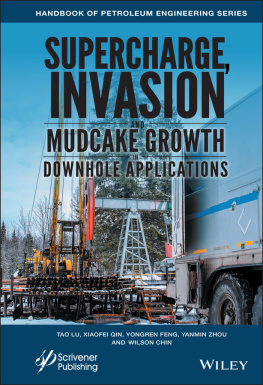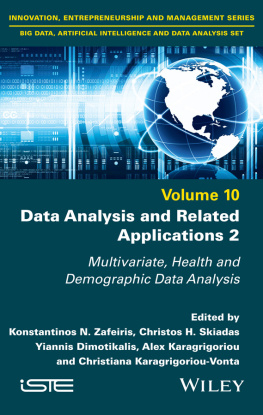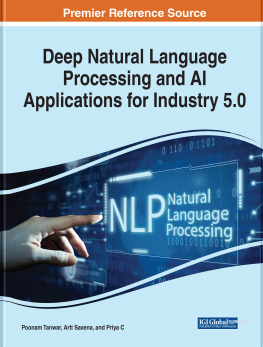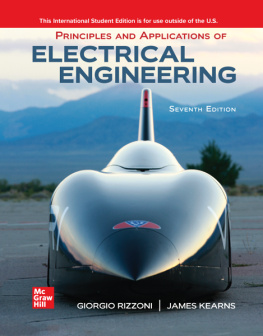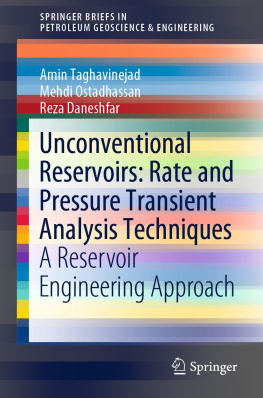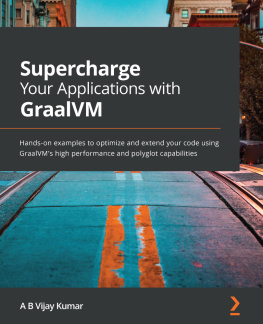Wilson Chin (editor) - Supercharge, Invasion, and Mudcake Growth in Downhole Applications (Advances in Petroleum Engineering)
Here you can read online Wilson Chin (editor) - Supercharge, Invasion, and Mudcake Growth in Downhole Applications (Advances in Petroleum Engineering) full text of the book (entire story) in english for free. Download pdf and epub, get meaning, cover and reviews about this ebook. year: 2021, publisher: Wiley-Scrivener, genre: Children. Description of the work, (preface) as well as reviews are available. Best literature library LitArk.com created for fans of good reading and offers a wide selection of genres:
Romance novel
Science fiction
Adventure
Detective
Science
History
Home and family
Prose
Art
Politics
Computer
Non-fiction
Religion
Business
Children
Humor
Choose a favorite category and find really read worthwhile books. Enjoy immersion in the world of imagination, feel the emotions of the characters or learn something new for yourself, make an fascinating discovery.
- Book:Supercharge, Invasion, and Mudcake Growth in Downhole Applications (Advances in Petroleum Engineering)
- Author:
- Publisher:Wiley-Scrivener
- Genre:
- Year:2021
- Rating:3 / 5
- Favourites:Add to favourites
- Your mark:
Supercharge, Invasion, and Mudcake Growth in Downhole Applications (Advances in Petroleum Engineering): summary, description and annotation
We offer to read an annotation, description, summary or preface (depends on what the author of the book "Supercharge, Invasion, and Mudcake Growth in Downhole Applications (Advances in Petroleum Engineering)" wrote himself). If you haven't found the necessary information about the book — write in the comments, we will try to find it.
Mysterious supercharge effects, encountered in formation testing pressure transient analysis, and reservoir invasion, mudcake growth, dynamic filtration, stuck-pipe remediation, and so on, are often discussed in contrasting petrophysical versus drilling contexts. However, these effects are physically coupled and intricately related. The authors focus on a comprehensive formulation, provide solutions for different specialized limits, and develop applications that illustrate how the central ideas can be used in seemingly unrelated disciplines. This approach contributes to a firm understanding of logging and drilling principles. Fortran source code, furnished where applicable, is listed together with recently developed software applications and conveniently summarized throughout the book. In addition, common (incorrect) methods used in the industry are re-analyzed and replaced with more accurate models, which are then used to address challenging field objectives.
Sophisticated mathematics is explained in down to earth terms, but empirical validations, in this case through Catscan experiments, are used to keep predictions honest. Similarly, early-time, low mobility, permeability prediction models used in formation testing, several invented by one of the authors, are extended to handle supercharge effects in overbalanced drilling and near-well pressure deficits encountered in underbalanced drilling. These methods are also motivated by reality. For instance, overpressures of 2,000 psi and underpressures near 500 psi are routinely reported in field work, thus imparting a special significance to the methods reported in the book.
This new volume discusses old problems and modern challenges, formulates and develops advanced models applicable to both drilling and petrophysical objectives. The presentation focuses on central unifying physical models which are carefully formulated and mathematically solved. The wealth of applications examples and supporting software discussed provides readers with a unified focus behind daily work activities, emphasizing common features and themes rather than unrelated methods and work flows. This comprehensive book is must reading for every petroleum engineer.
Wilson Chin (editor): author's other books
Who wrote Supercharge, Invasion, and Mudcake Growth in Downhole Applications (Advances in Petroleum Engineering)? Find out the surname, the name of the author of the book and a list of all author's works by series.

